
Newsletter Subscribe
Enter your email address below and subscribe to our newsletter

Enter your email address below and subscribe to our newsletter
Your Source for Game News and Guides
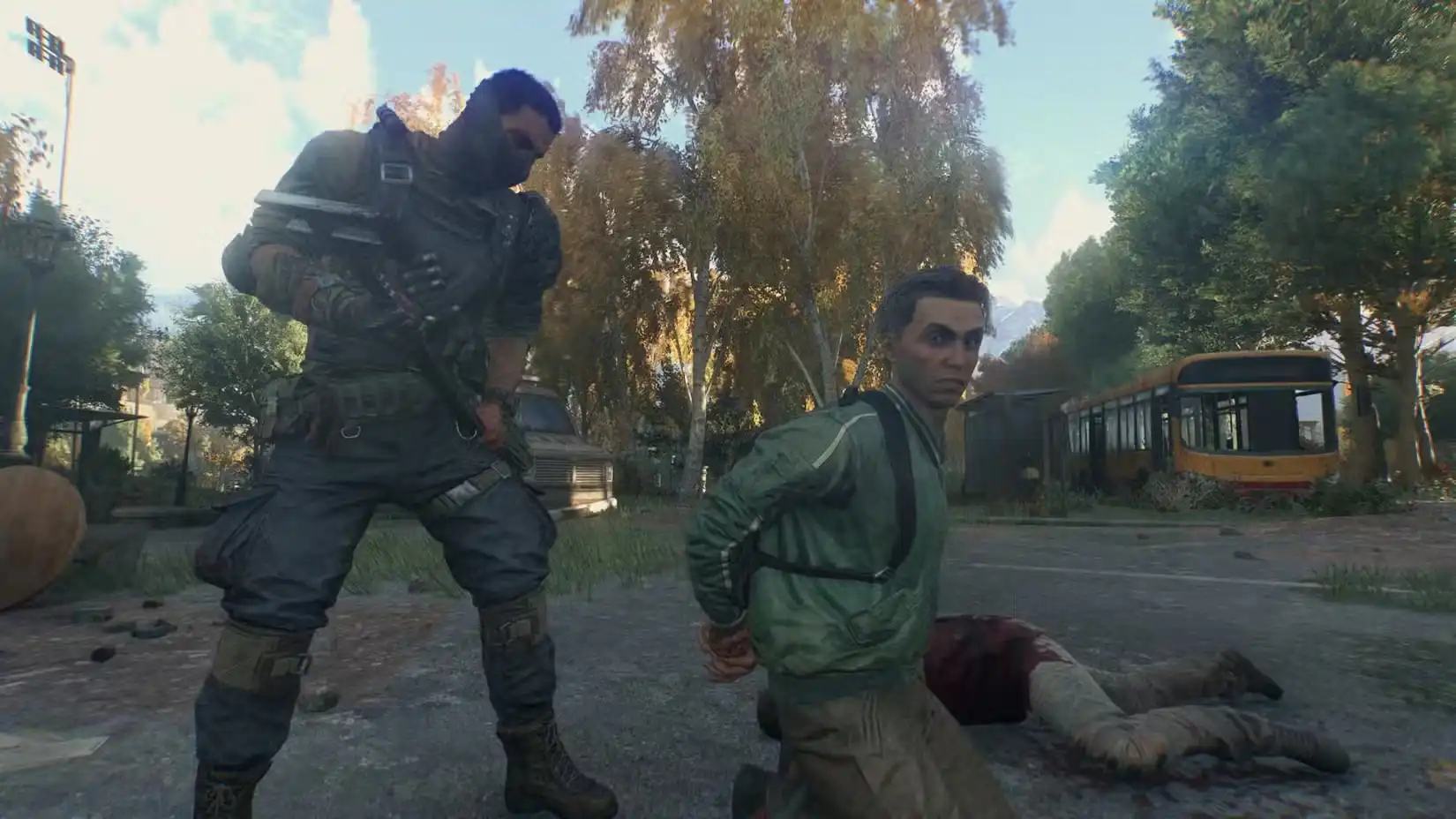
Master Dying Light: The Beast with our complete beginner’s guide. Learn combat tactics, night survival, Beast Mode, gear progression, and essential skills for Castor Woods survival.
Welcome to the unforgiving wilderness of Castor Woods, where every decision could mean the difference between survival and becoming zombie chow. Dying Light: The Beast throws you into Kyle Crane’s most challenging adventure yet, and the learning curve can be brutal for newcomers and veterans alike.
This isn’t your typical zombie game where death is a minor inconvenience. Here, every mistake costs precious experience points, and the enhanced infected have abilities that will humble even seasoned players. But with the right knowledge and strategy, you can transform from zombie bait into an apex predator of the apocalypse.
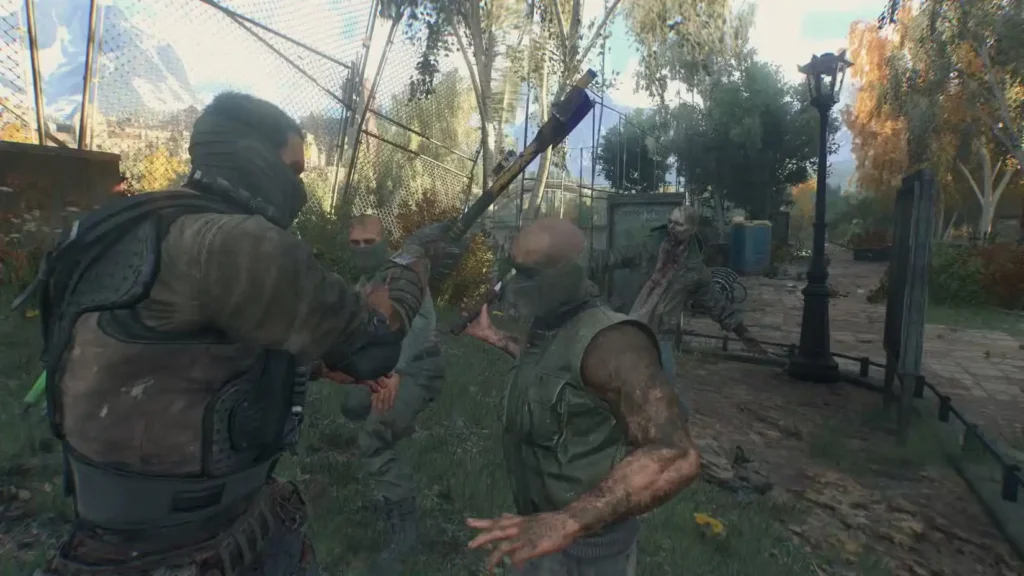
The most critical skill you’ll develop isn’t swinging weapons or jumping between buildings – it’s understanding spatial awareness in a three-dimensional combat environment.
The Distance Management Mindset Every action in Dying Light: The Beast revolves around maintaining optimal distance from threats. This means:
Combat Spacing Strategies: When fighting groups, never let enemies surround you. Use environmental obstacles, doorways, and elevation changes to funnel enemies into manageable single-file attacks. The moment you’re grabbed by one zombie, others will close in rapidly, turning a manageable situation into a death trap.
The Grab Recovery System: If grabbed, you have several escape options, but they consume stamina and time. After multiple grabs, your options diminish rapidly as other infected converge. Prevention through proper positioning always beats reaction through escape mechanics.
TL;DR – Survival Fundamentals: Master distance management through spatial awareness, proper positioning, and understanding grab mechanics to avoid death penalties and XP loss.
Combat effectiveness isn’t about finding the most powerful weapon – it’s about matching your tool to the tactical situation you’re facing.
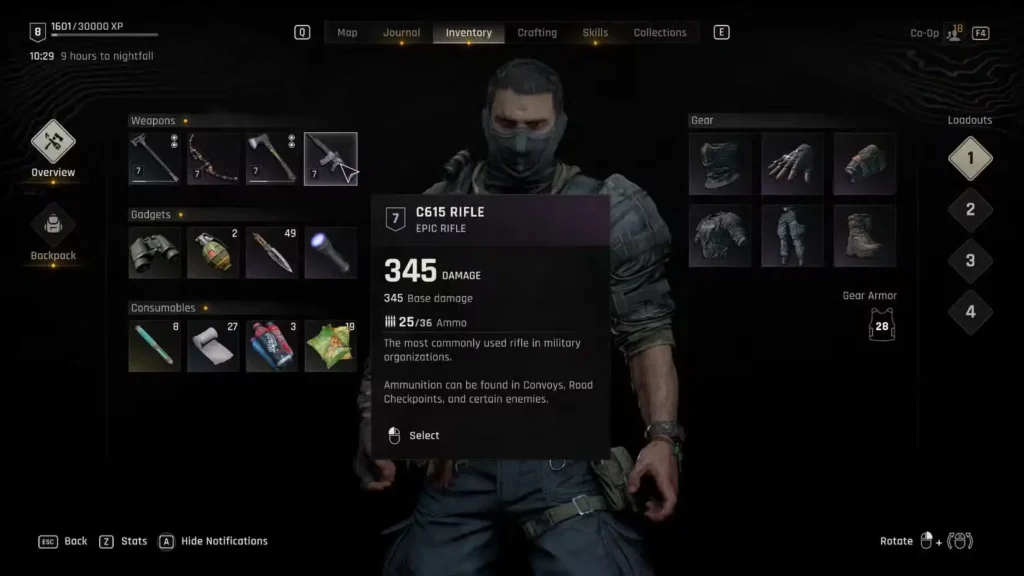
One-Handed Weapon Categories:
Short Blades (Knives, Kukris):
Blunt Weapons (Hammers, Clubs):
Two-Handed Weapon Specializations:
Heavy Hammers:
Sweeping Blades (Scythe, Large Swords):
Ranged Weapon Priority: Throwing knives and bows serve different strategic purposes. Throwing knives excel at eliminating specific threats (Gas Tanks, Screamers) before they can alert other enemies. Bows provide silent long-range elimination for strategic enemy reduction.
TL;DR – Weapon Selection: Match weapons to situations – short blades for stealth, blunt weapons for targeted damage, two-handed hammers for crowds, scythes for swarms, and ranged weapons for priority threat elimination.
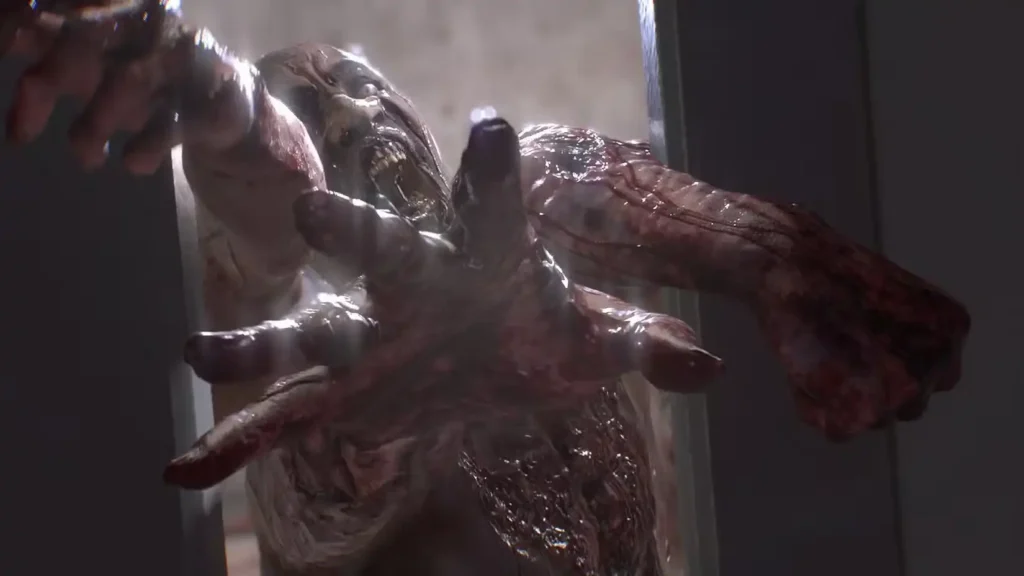
Castor Woods’ open wilderness fundamentally changes night survival compared to urban Dying Light environments. The enhanced Volatile capabilities combined with minimal cover create genuinely terrifying nighttime scenarios.
Enhanced Volatile Threat Assessment:
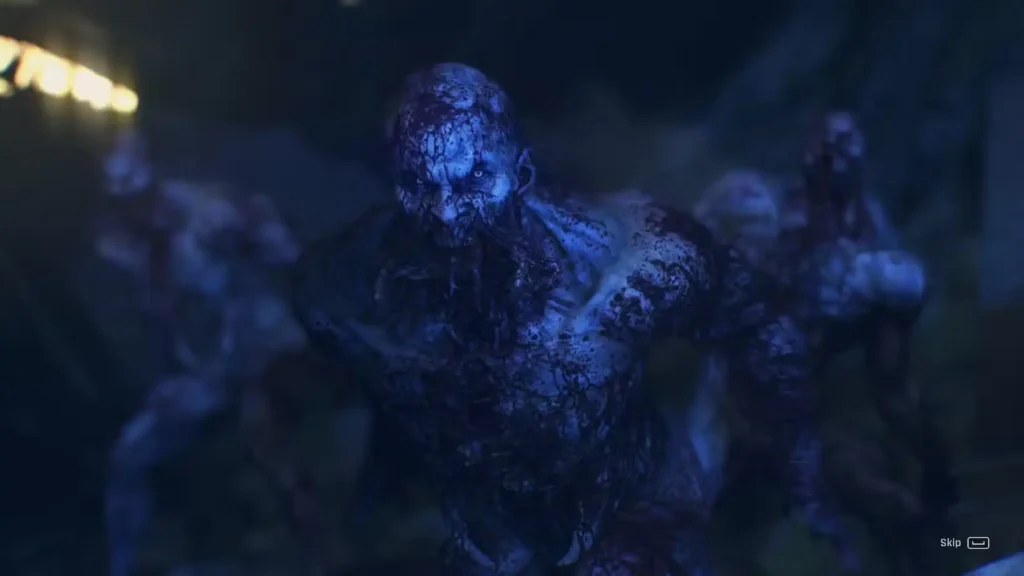
Stealth Adaptation Strategies:
Light Management: Your flashlight is simultaneously essential for navigation and dangerous for detection. Learn to use brief, directed flashes rather than constant illumination. Environmental lighting (moon, fires, building lights) becomes crucial for movement planning.
Environmental Concealment: Traditional hiding spots lose effectiveness against enhanced senses:
Emergency Evasion Techniques: When detected, specific movement techniques counter different enemy types:
UV Shelter Strategy: Unlike urban environments with numerous safe zones, Castor Woods features widely spaced UV shelters. Mental mapping of shelter locations becomes survival-critical. Always identify your nearest shelter before engaging in risky nighttime activities.
TL;DR – Night Survival: Enhanced Volatiles require improved stealth tactics, careful light management, environmental awareness, and strategic UV shelter positioning for emergency escapes.
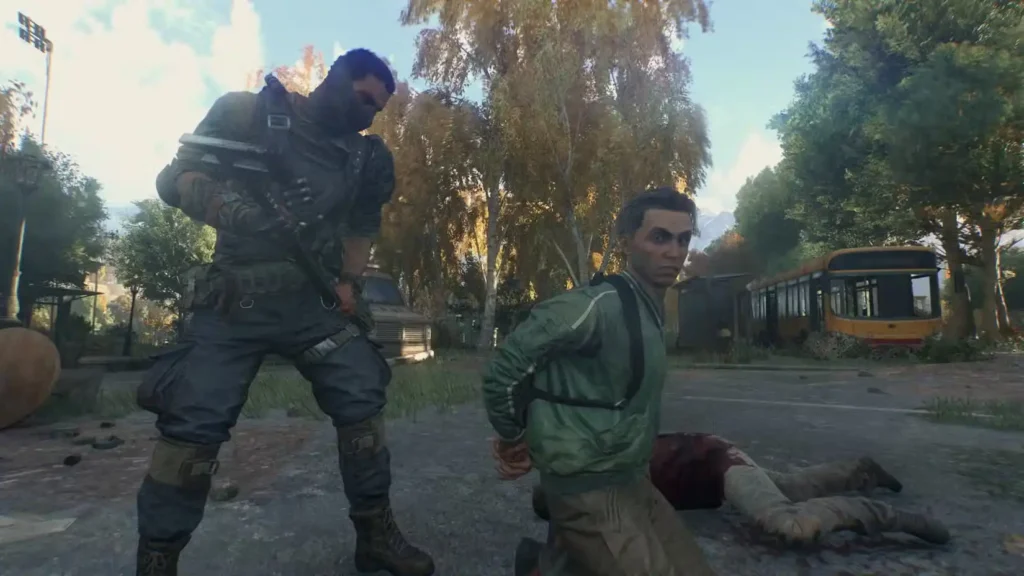
Kyle’s transformation ability represents the most powerful tool in your survival arsenal, but mastering its application requires understanding both activation mechanics and strategic timing.
Beast Mode Activation System: The Beast meter builds through combat engagement:
Beast Mode Capabilities: Once activated, Kyle gains temporary god-like abilities:
Strategic Beast Mode Usage:
Crowd Control Scenarios: Save Beast Mode for overwhelming situations where normal tactics would result in death. Multiple Volatile encounters, large swarms, or boss fights represent optimal usage opportunities.
Resource Conservation: Beast Mode allows you to engage threats that would normally require expensive consumables (grenades, explosives, medical supplies). Use it to clear high-value areas without depleting critical resources.
GSR Compound Enhancement: Defeating Chimera bosses provides GSR compounds that permanently enhance Beast Mode capabilities. Prioritize these encounters to unlock advanced Beast abilities that dramatically expand your tactical options.
Control Balance: Early game Beast Mode can feel uncontrollable, but skill progression unlocks management abilities. Learn to balance regular Kyle’s strategic gameplay with Beast Mode’s overwhelming power for maximum effectiveness.
TL;DR – Beast Mode: Build meter through combat engagement, save for overwhelming threats, use for resource conservation, and enhance through Chimera defeats for permanent ability improvements.
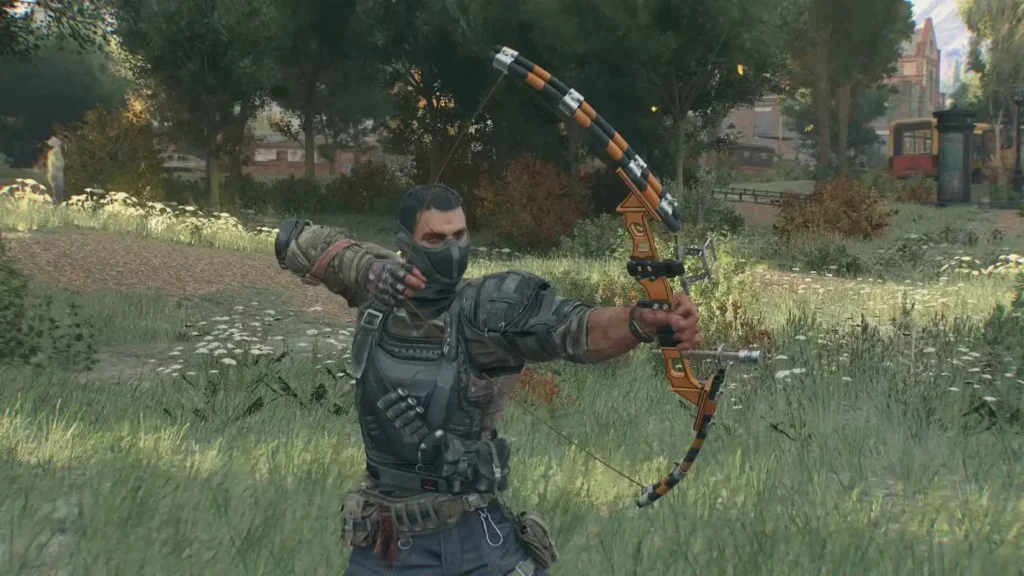
Equipment advancement in Dying Light: The Beast follows character level progression, but strategic choices in upgrade priorities can dramatically accelerate your survival capabilities.
Priority Upgrade Sequence:
Essential First Priority – Hunting Bow: Available from your first safe zone workbench, the hunting bow should reach Rare quality immediately. This weapon provides:
Secondary Priority Items:
Landmark Exploration Benefits: Every landmark contains guaranteed blueprints or gear pieces. Systematic landmark clearing provides:
Survivor Rescue Rewards: Rescued survivors offer substantial experience points plus equipment rewards. Prioritize survivor encounters for:
Convoy System Exploitation: Daily respawning convoys provide renewable equipment sources:
TL;DR – Gear Progression: Prioritize hunting bow upgrades, focus on landmark exploration for guaranteed gear, rescue survivors for experience and rewards, and establish daily convoy farming routes.
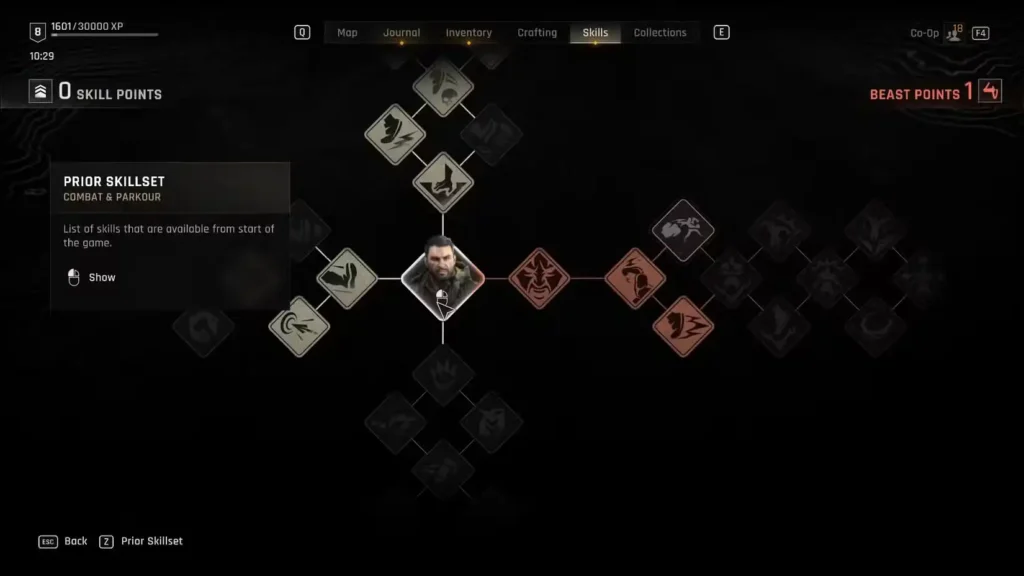
The skill system in Dying Light: The Beast combines inherited abilities from previous games with new progression options. Strategic skill selection can prevent early-game deaths and accelerate your development into an effective survivor.
Critical First Skills:
Active Landing (IMMEDIATE Priority): Death from fall damage wastes precious experience points and progress. This skill eliminates a major source of accidental death and enables aggressive parkour navigation essential for survival.
Power Shot (Combat Priority): Enhances bow damage for more reliable enemy elimination. Combined with bow upgrades, this creates a powerful stealth elimination system crucial for managing overwhelming encounters.
Stealth Expert (Survival Priority): Reduces movement noise for improved night survival and stealth engagement options. Essential for navigating enhanced Volatile detection capabilities.
Flamethrower (Area Control Priority): Provides efficient swarm clearing capability for situations where individual combat becomes impractical. Excellent resource efficiency for large-group encounters.
Prior Skillset Exploration: Kyle begins with numerous unlocked abilities from previous adventures. Review the Prior Skillset tab to understand available capabilities including:
TL;DR – Essential Skills: Unlock Active Landing immediately to prevent fall deaths, prioritize Power Shot and Stealth Expert for combat and survival, add Flamethrower for crowd control, and review Prior Skillset for inherited abilities.
Resource management becomes critical in extended survival situations. These advanced tactics maximize your effectiveness while minimizing resource consumption and risk exposure.
Sound-Based Trap Combinations:
Environmental Trap Exploitation:
Beast Mode Farming Strategy:
Safe Zone Exploitation:
Stamina Management Combat:
Priority Target Elimination:
TL;DR – Advanced Combat: Combine environmental traps with sound decoys, farm experience through strategic Beast Mode usage, exploit safe zones for risk-free combat, and prioritize target elimination for tactical advantage.
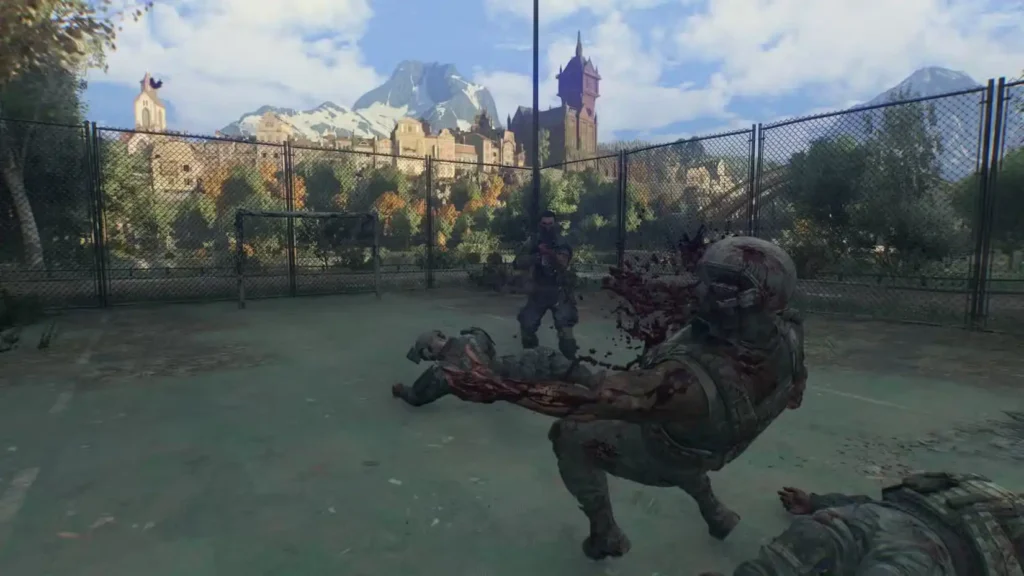
Understanding the time investment required for mastering these systems helps set realistic expectations for your Castor Woods survival journey. Whether you’re planning a focused story experience or comprehensive exploration, knowing how long Dying Light: The Beast takes to complete helps you allocate learning time appropriately.
Effective resource gathering becomes even more critical as you develop these advanced tactics. Understanding efficient material farming locations and techniques ensures you can maintain your upgraded equipment throughout your adventure.
TL;DR – Resource Planning: Plan learning time based on intended completion level and master efficient resource gathering to support advanced tactical development.
Success in Dying Light: The Beast comes from integrating these systems into comprehensive survival strategies rather than mastering individual elements in isolation.
Early Game Focus (First 5 Hours):
Mid Game Development (Hours 5-15):
Late Game Mastery (15+ Hours):
Continuous Development:
TL;DR – Integration Strategy: Build foundational skills early, develop advanced tactics mid-game, achieve mastery through continuous practice and adaptation across increasing challenge levels.
Mastering Dying Light: The Beast requires patience, strategic thinking, and willingness to learn from inevitable mistakes. The enhanced challenge level demands respect, but proper preparation and tactical knowledge transform the experience from overwhelming frustration into rewarding accomplishment.
Remember that every expert survivor started as zombie bait. The difference between thriving and merely surviving lies in systematic skill development, strategic resource management, and understanding how all game systems interconnect to create comprehensive survival capabilities.
The wilderness of Castor Woods awaits, and Kyle Crane’s fate rests in your hands. Armed with this knowledge, you’re ready to face whatever horrors the infected world throws at you.
Ready to begin your survival journey? Get Dying Light: The Beast on Steam, PlayStation, or Xbox and put these strategies into practice.
Want to maximize your starting advantage? Don’t miss our complete docket codes collection for exclusive gear that’ll give you an edge in those crucial early survival encounters!